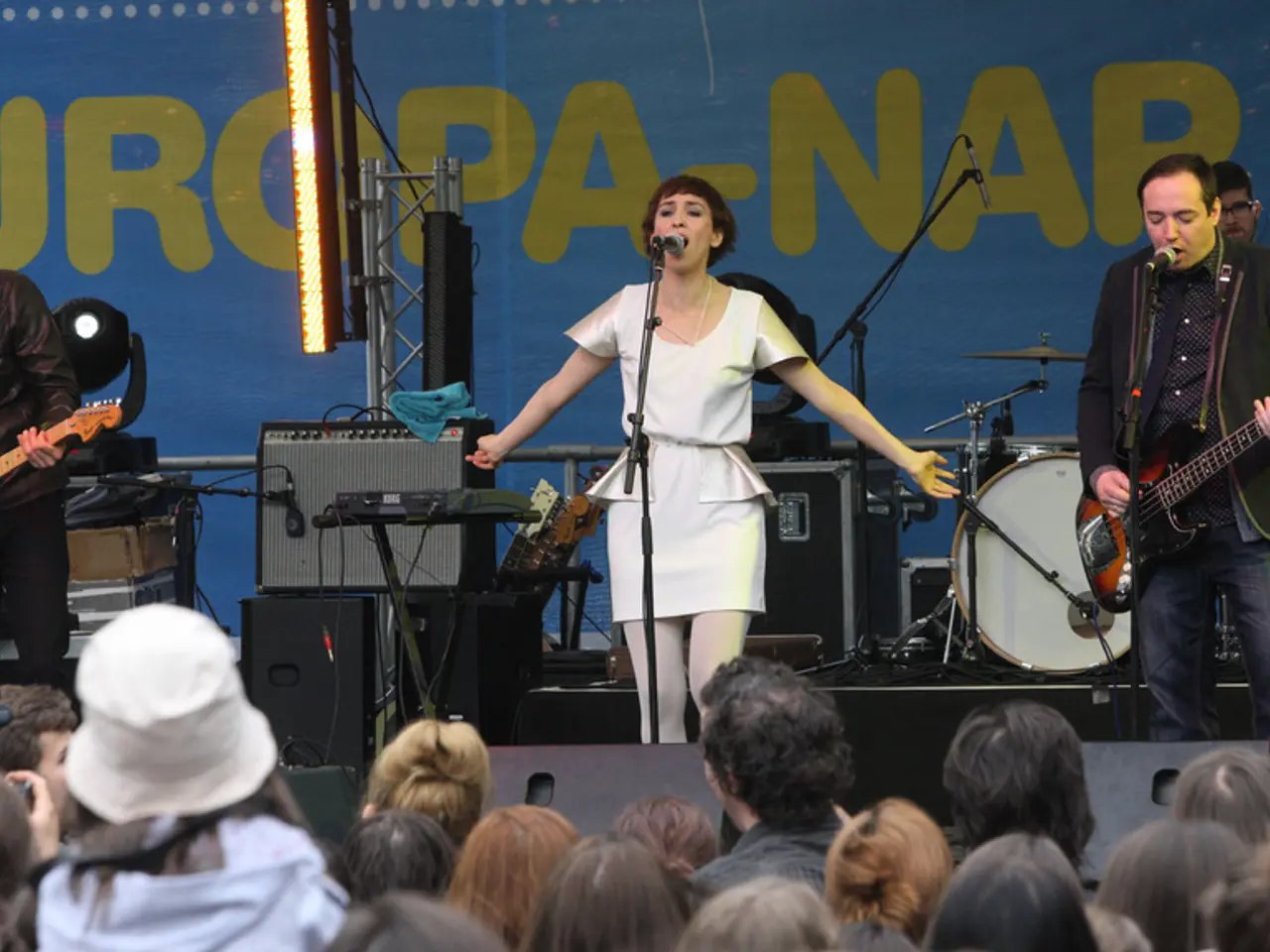Reason behind identical appearances in movie marketing visuals
In the world of movie marketing, the art of poster design plays a crucial role in capturing the public's attention and setting the tone for the film. This art form relies heavily on strategic repetition and the use of colour psychology to target specific audiences and effectively communicate the film's genre and mood at a glance.
One common observation is the avoidance of blue and pink, traditionally associated with babies, in movie posters. Instead, action and thriller posters tend to favour a blue tint, while romantic dramas often depict the male lead cradling the female's head and going in for the kiss, usually against a white background.
The use of high-contrast colour combinations, such as the black, white, and orange trifecta on action movie posters or the orange and blue pairing, is based on colour theory and the complementary nature of these colours. This strategic use of colour helps emphasize key visual elements, making the poster eye-catching and memorable.
Familiar poses, like the hero running through the streets at an angle or the back-to-back pose in romantic comedies, further reinforce these genre signals by creating emotional resonance and familiarity. These standardized designs leverage cultural conventions, so that when the public sees a particular colour scheme or pose, they immediately associate it with the film's genre or mood.
However, not all colour combinations are equally prevalent. Red and green, for instance, are less commonly used due to their association with Christmas. On the other hand, violet and yellow, another complementary colour pair, are rarely seen on movie posters.
The use of a single image of a star's head or a fine set of female legs is a common marketing strategy, often used when studios run out of ideas for marketing a movie. Hollywood's reliance on sequels, franchises, reboots, and re-releases also contributes to the repetition of these designs.
Yet, despite this repetition, movie poster designers tend to stick to a limited number of tried-and-true designs. This consistency contributes not only to instant recognition but also to setting expectations about the film’s content and emotional tone, which can impact audience interest and their decision to watch the film.
In essence, the art of movie poster design is a carefully crafted blend of strategic repetition, colour psychology, and cultural conventions. These elements work together to create instant visual cues that shape public perception, aligning audience expectations with recognizable genre conventions or emotions conveyed by the colour and composition.
[1]: Reference for the use of colour psychology in marketing [3]: Reference for the impact of consistent branding and design on audience engagement and recall
Movie poster design, a crucial aspect of entertainment, effectively communicates a film's genre and mood through strategic repetition and the use of color psychology. For example, action posters often employ a black, white, and orange color scheme, while romantic dramas favor a blue tint or depict a romantic pose against a white background. These designs leverage cultural conventions, creating instant visual cues that shape public perception and align audience expectations with recognizable genre conventions or emotions conveyed by the color and composition. [Reference for the use of color psychology in marketing] [Reference for the impact of consistent branding and design on audience engagement and recall]






